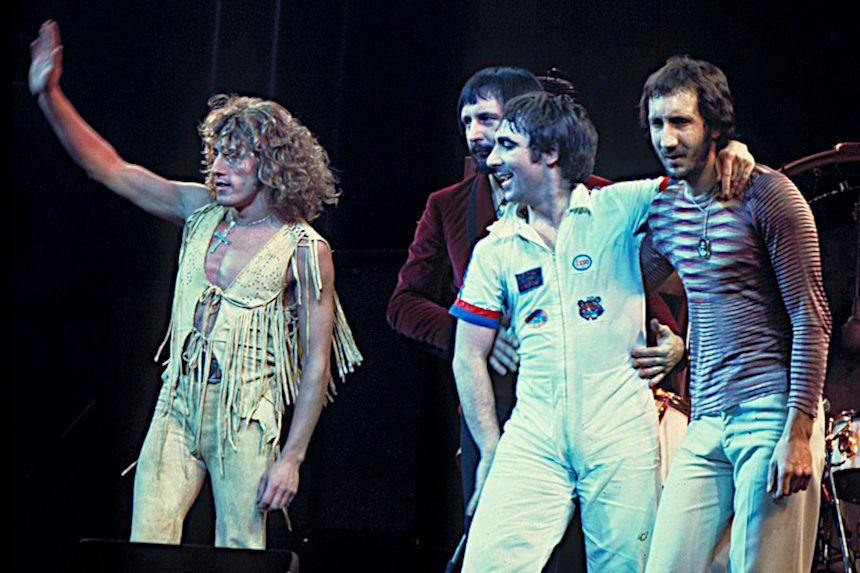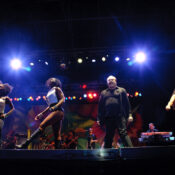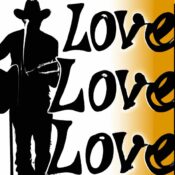Pete Townshend’s windmill playing motion. John Entwistle’s ceaseless fingers on the bass. The frantic thunder of Keith Moon’s drums. The muscular grandeur of Roger Daltrey’s voice. That’s the classic line-up of The Who, rock titans who pushed the boundaries of what a band could do on stage and in the studio. Fifty years ago, the group released one of their greatest achievements, the rock opera Tommy. The album would go on to receive critical acclaim, inspire a film and Broadway musical, and sell more than 20 million copies. While it wasn’t the first album with operatic aspirations, it was the first one to willingly take on that label. Today, with its legacy assured, we look back at the origins of the project, the controversy surrounding the subject matter, and how it remains a vital classic today.
The Who formed in 1964. Originally called The Detours, the nucleus of the classic line-up coalesced when Keith Moon joined the band. An on-stage accident led to Townshend smashing a guitar in frustration, but that simple act got the word out about the propulsive young band with an unpredictable live show. By the end of the year, they’d recorded their first single, “I Can’t Explain.” A string of successes followed, though they were punctuated by occasional in-fighting in the band, the wildman (hotel-wrecking) behavior of Moon, and an infamous appearance on The Smothers Brothers Comedy Hour wherein a rigged drum kit explosion slightly injured Moon and damaged Townshend’s hearing. In 1967, they recorded the concept album The Who Sell Out, which played a bit with narrative in the mini rock opera number “Rael.”
The Who wreck the stage (and use too much gunpowder in the drum kit) on The Smothers Brothers Comedy Hour. (Uploaded to YouTube by getTV)
In August of 1968, Townshend gave an interview to Rolling Stone in which he discussed his work on a new cycle of songs that would reflect an overall narrative. Some influence came from Townshend’s interest in the teachings of Indian spiritual leader Meher Baba. Townshend remarked on the ideas of putting a deaf, mute, and blind protagonist at the center of the story and exploring how that person might communicate with others.
Shortly after the interview, the band settled into IBC Studios in London for several months; they took a break to tour and appear in the film The Rolling Stones Rock and Roll Circus, but were back at it by early 1969. Townshend was the driver behind the project, writing much of the material, but the entire band worked on arrangements together. At Townshend’s behest, Entwistle wrote “Cousin Kevin” and “Fiddle About,” while Moon’s ideas were realized by Townshend in “Tommy’s Holiday Camp.” The album was completed in March.
Taken together, the 24 songs of Tommy tell the story of a boy victimized by trauma. Mrs. Walker’s son Tommy is born after his father disappears on an expedition for the army. The captain makes a surprise return and kills his wife’s new man; Tommy witnesses the crime but is brainwashed by his mother into being “deaf, dumb, and blind.” Much of Tommy’s journey turns inward as he has to overcome abuse and the fundamental loss of his senses; however, his ability to feel vibrations unexpectedly turns him into a gifted pinball player. Tommy’s condition is eventually diagnosed as psychosomatic and he breaks free to become a religious leader. Later, abandoned by his followers, he retreats into himself again.
It was heady stuff, but the band’s music nevertheless brought the complicated story a commercial punch. The album became an immediate success upon release in both the U.S. (May 17, 1969) and the U.K. (May 23, 1969). It would hit #4 on the U.S. album charts, selling 200,000 copies in the first two weeks and moving 500,000 units by that August. “Pinball Wizard,” “I’m Free,” and “See Me, Feel Me” all hit the Top 40 as singles. Today, the album has sold more than 20 million copies.
Tommy helped cement rock as a form that was open to experimentation. While the boundaries had been pushed earlier by their contemporaries The Beach Boys (with Pet Sounds in 1966), The Beatles (Sgt. Pepper’s Lonely Hearts Club Band in 1967), and The Rolling Stones (with Beggar’s Banquet in 1968), The Who took up the challenge and planted their flag as one of the most important groups of the era. In August of 1969, The Who played at Woodstock, performing much of Tommy in their set. The rode that high into other tours and festivals (including their epic turn at the Isle of Wight) that made their reputation as one of the best live rock bands in existence.
Trailer for Tommy. (Uploaded to YouTube by Screenbound Pictures)
The band returned to the narrative form in 1973 with their mods-versus-rockers album Quadrophenia. The next year, director Ken Russell began to adapt Tommy into a film; Daltrey played the title character and Hollywood royalty like Jack Nicholson and Ann-Margret had roles. The band all appeared in the movie, as did Eric Clapton, Tina Turner, and Elton John, who memorably portrayed the Pinball Wizard in giant boots.
The Who stormed back into prominence in 1981 with “You Better You Bet.” (Uploaded to YouTube by TheWho)
Unfortunately, the band spent the end of the ‘70s beset by tragedy. Moon died of an accidental overdose in 1978, and a 1979 concert in Cincinnati saw 11 fans killed in a press by the crowd. When the band reconvened, they produced a hit song and video in “You Better You Bet” in 1981. The band took stretches of time off during the rest of the ‘80s, coming back together for events like Live Aid in 1985 and a reunion tour in 1989. The group was inducted into the Rock and Roll Hall of Fame in 1990 and officially reformed in 1996. Their drummer since that time has been Zak Starkey, the son of their old friend from The Beatles, Ringo Starr. Though Entwistle passed away in 2002, The Who continue on. In January, the band announced a new tour (complete with an orchestra), with an album due by the end of the year. A number of songs from Tommy still figure into the 2019 setlist songs.
The impact and continued cultural presence of Tommy can teach us something about the ongoing power of music. Great work transcends trends. Music that is about something can last; even if our cultural concerns change, people are still confronted by feelings of isolation and a need for connection. For 50 years, the musical question has been “Tommy, can you hear me?” We can be absolutely certain that the world heard Tommy.
Featured Image: The Who, original line up, performing in Chicago. Left to right: Roger Daltrey, John Entwistle, Keith Moon, Pete Townshend. (Photo by Jim Summaria; Wikimedia Commons via Creative Commons Attribution-Share Alike 3.0 Unported license.)
Become a Saturday Evening Post member and enjoy unlimited access. Subscribe now



